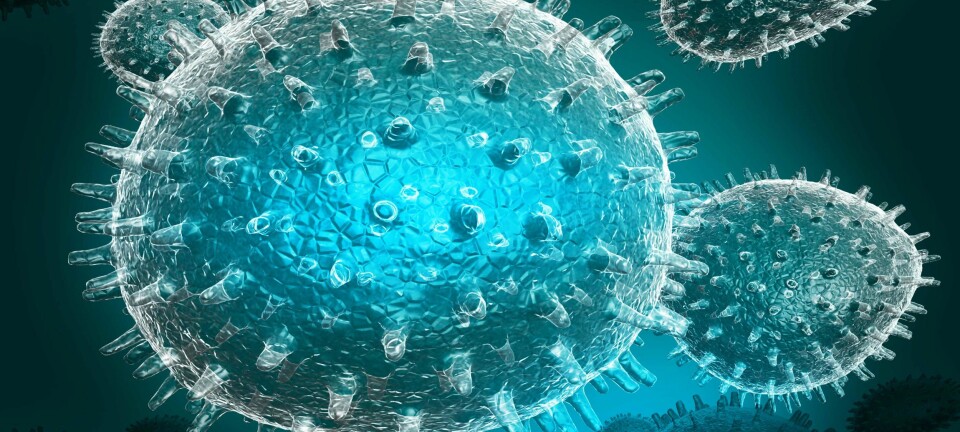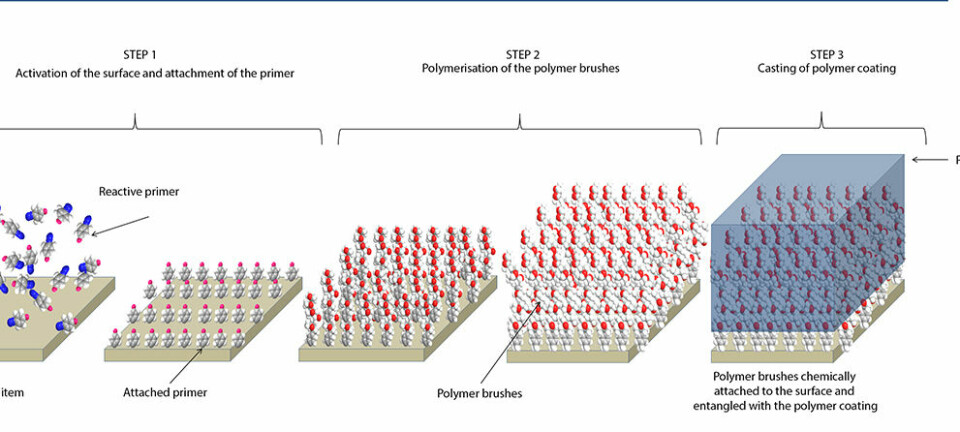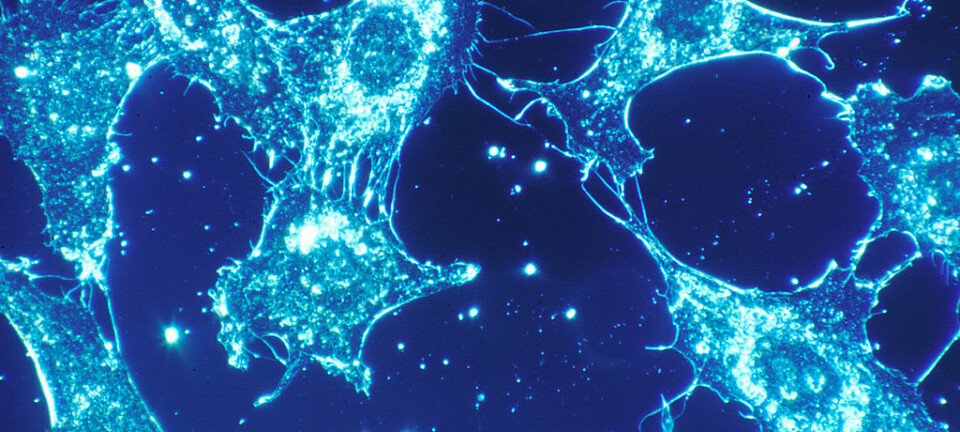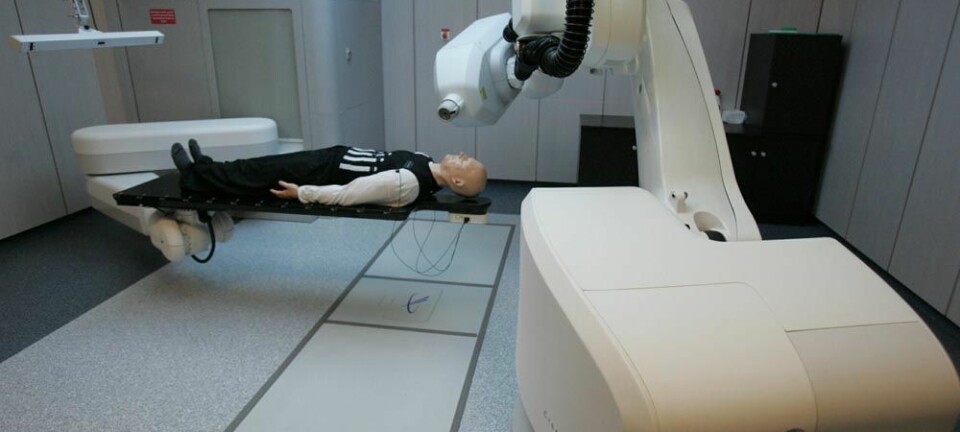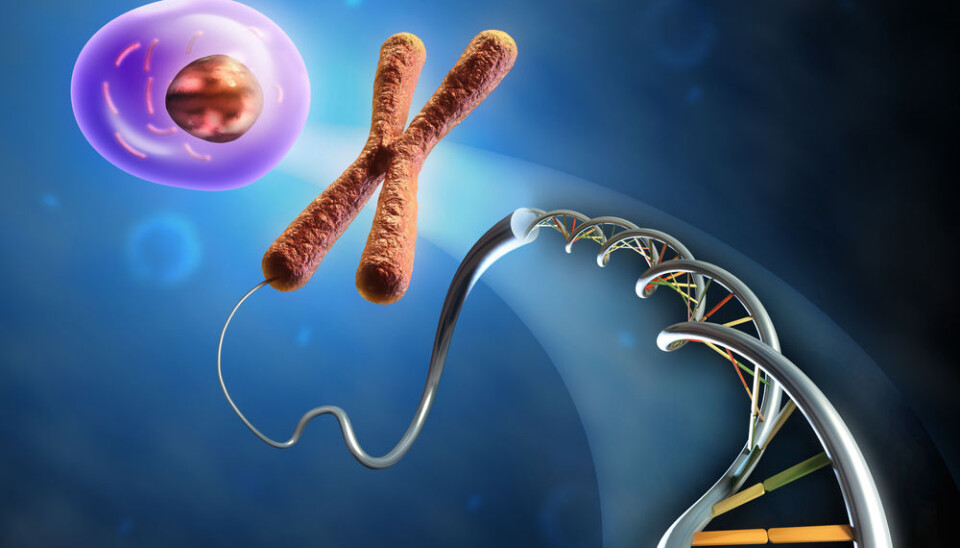
Mechanism behind cell development discovered
Danish scientists have discovered a cell mechanism that can explain the development of some of types of cancer.
The body has 220 different types of cells that each have a function of its own. Although the cells can be very different they all have the same genes -- some of which are activated, while others are deactivated.
This combination of activated and deactivated genes decides whether the individual cell develops into a skin cell, for instance, or a blood cell.
Danish scientists have now discovered how cells control which genes are deactivated and which genes are activated.
The research shows that a protein complex named PRC2 does not deactivate genes by itself, as scientists have believed until now. Instead, PRC2 binds to genes that are to remain deactivated.
In this way, the protein complex helps the cells retain their identity once it has been established.
This discovery of PRC2’s function can lead to a better understanding of how different types of cancer arise.
"We have known for a long time that PRC2 plays an important role in some forms of cancer," says professor Kristian Helin, head of research at University of Copenhagen's Biotech Research & Innovation Centre (BRIC).
"A fault in the protein complex can result in uncontrolled cell growth so it’s interesting that we now can show PRC2’s function in controlling which genes are activated and which are deactivated."
Helin led the study which was recently published in Molecular Cell.
PCR2 maintains cell identity
The new study shows that PRC2 in itself does not activate or deactivate the genes, but how it instead ensures that genes that are already deactivated remain deactivated and do not become active again sporadically.
In this way, PRC2 helps the cell maintain its identity as a liver cell, a blood cell or a skin cell, for example.
Without PRC2 the genes would slowly become active again, and the cell would lose its specialisation, grow uncontrollably and could turn into a cancer cell instead.
"This is completely new knowledge. What has been mapped in this study is a quite fundamental function of a very important protein complex,” says Helin.
He adds that scientists have debated precisely this difference in the potential function of PRC2 for a long time -- but nothing has been proven until now.
PRC2 binds directly to the gene
Besides mapping PRC2’s fundamental role, the scientists also discovered how the protein complex behaves.
The research shows that PRC2 binds directly to the DNA in the genes that have been deactivated by other signals.
The scientists found the DNA sequence that PRC2 binds to. The sequence is found in two-thirds of all our genes which means they are under PRC2’s control.
The discovery means the end of a fruitless search, which has lasted ten years so far, for molecular mechanisms that could explain how PRC2 affects the genes.
"For ten years scientists have looked for factors that recruit PRC2 to the DNA," says Helin. "Our study shows that PRC2 can bind to the DNA by itself. It looks like there is no need for other factors and that's why we haven't been able to find them."
Gives a better understanding of cancer
The new discovery also gives the scientists a better understanding of the development of various types of cancer.
Previous studies have shown for example that leukaemia arises as a result of a mutation in PRC2.
Several pharmaceutical companies are in the process of developing medicine based on PRC2 inhibitors.
According to Helin, the new research result gives an insight into what goes wrong when leukaemia develops.
"A mutation in PRC2 can result in either deactivation or hyper-activation of the protein complex," he says.
"Both cases give a faulty genetic expression in the cell, which can then continue to grow uncontrollably as a cancer cell. Hopefully there will be good results from the pharmaceutical companies' tests with PRC2 inhibitors. Our studies certainly give the pharmaceutical companies a better understanding of PRC2's function," says Helin.
Bonding can be reversed
The BRIC scientists have worked with embryo stem cells from mice as a model system for their research.
Stem cells have not yet developed into specific roles and they are therefore ideal subjects for studies when scientists want to find out more about the mechanisms that play a role in the specialisation of cells.
In their tests with stem cells, the scientists noted the following:
-
By exposing the cells to chemicals, the scientists could get them to specialise in a certain direction. Here, the scientists could see that PRC2 first bonded to the genes after the cells had become specialised. Thus PRC2 did not determine which genes were to be activated and deactivated. PRC2 simply ensured that the cells remained deactivated after they had been deactivated by other cell mechanisms during the specialisation process.
-
In another test, the scientists developed stem cells that had no PRC2. Here the scientists could see that genes were deactivated when the stem cells were induced into specialisation, but they later became active again, as the protein complex was not present in the cells to ensure that the genes remained deactivated.
- The scientists also deactivated various genes chemically to find out how PCR2 would react. Here they noted that PRC2 bonded to all the deactivated genes with the specific PRC2-DNA sequence and ensured that they did not become activated again, although they had been deactivated 'artificially'.
"The overall conclusion is that we can now show how the protein complex functions," says Helin.
"This is fundamental to our understanding of stem cells and how they develop into various cell types. It is also of great importance for our understanding of epigenetics generally, as our study also shows that the process can be changed,” he says. “This simply requires the cell to send a signal that is strong enough to activate the gene again. In this case PRC2 stops binding to a given gene and the cell can develop in a new direction."
Professor: Important finding
Anders Lade Nielsen, a professor of epigenetics at the Department of Biomedicine at Aarhus University says the results are very important for answering some very basic questions about the interplay between epigenetics and the development of diseases such as cancer.
"For a number of years it has been recognised that faulty control by PRC2 was involved in a large number of cancer forms," Nielsen says. "But up to now it has been unclear how his malfunction of PRC2 at the cell level has been expressed.”
He says it is a new and important contribution to the explanation of PRC2’s importance for both normal cells and in the development of cancer."
Nielsen also believes that developing chemotherapeutic products that can stop faulty PRC2 control is an obvious step to take.
"The new knowledge about how PRC2 is normally involved in establishing epigenetic memory will improve the possibility of developing drugs that can change PRC2's faulty control," he says.
------------------
Read the original story in Danish on Videnskab.dk
Translated by: Michael de Laine

